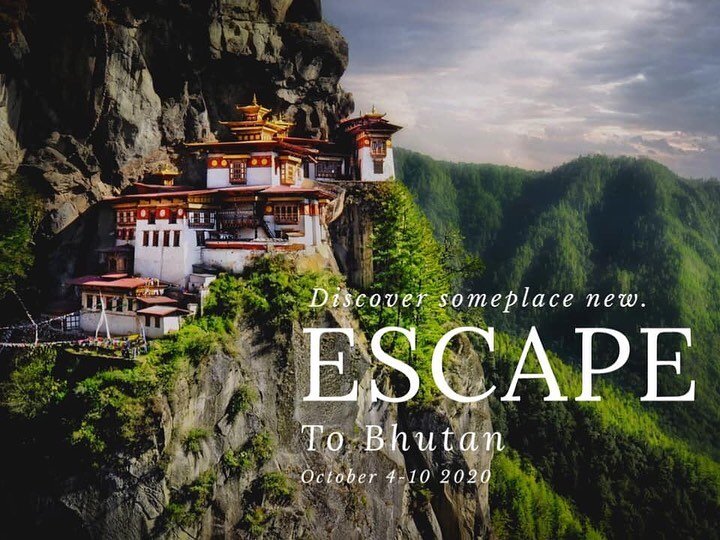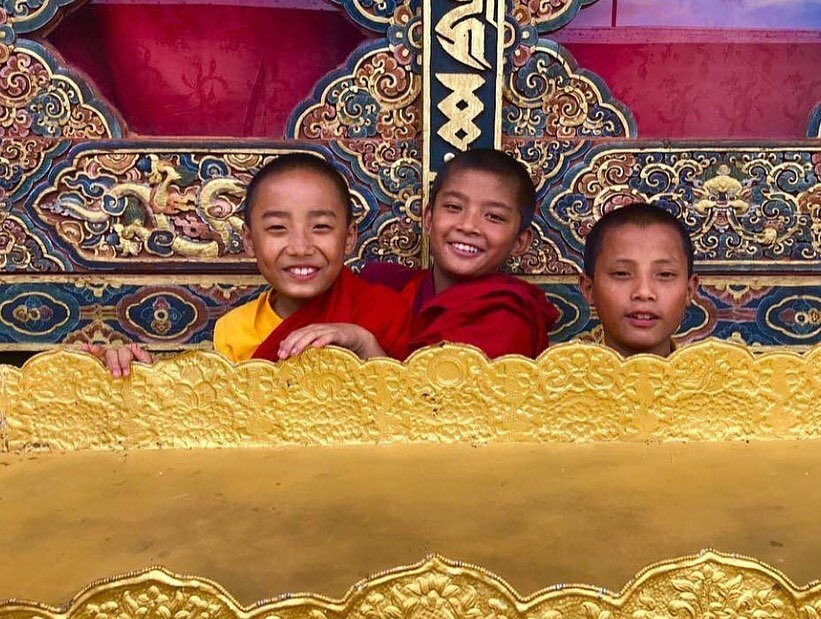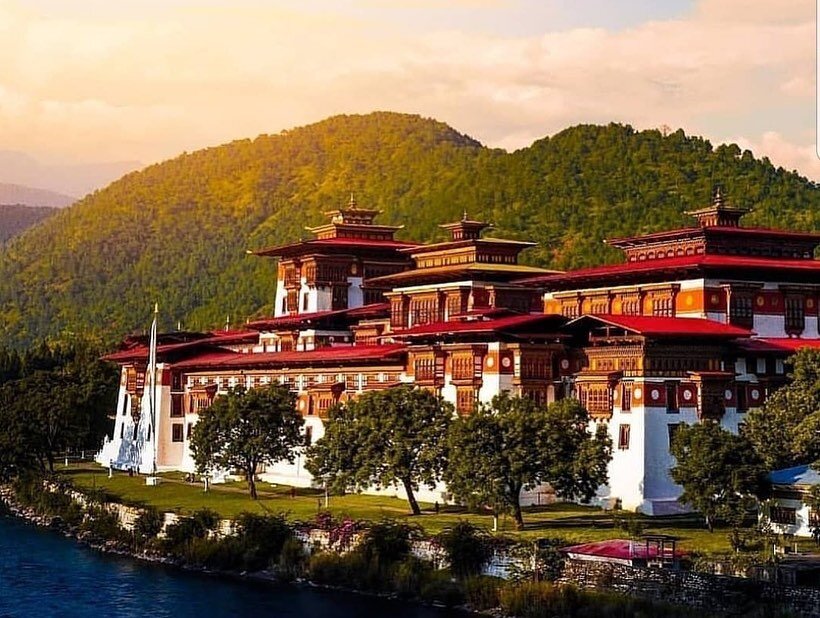7 DAY 6 NIGHT WONDERFUL BHUTAN TOUR WITH CYNTHIA KOH ON 4th – 10th OCT 2020
FLIGHT SCHEDULE: (For reference and subject to change as there be rescheduling in timing in 2020)
04OCT 2020 DAY 01 SINGAPORE / PARO KB541 0630/1030 SUN
10OCT 2020 DAY 07 PARO / SINGAPORE KB540 0750/1600 SAT
Package rate:
Twin / Triple sharing basis : SGD3650/person
Single rooming supplement : SGD330/person
Package includes:
1) Return economy airfare on Drukair to Bhutan (This airfare subject to change, any changes to be advice by Jan 2020)
2) Visas for Bhutan
3) A qualified & licensed English speaking guide
4) An experienced local driver
5) A Tour Vehicle
6) All meals inclusive
7) Accommodation (local 3 stars hotels)
8) Taxes, surcharges, government contribution
9) Mineral water for the duration of the stay (foc)
10) Basic group travel insurance
Excludes:
1) Travel Insurance
2) Tips for the guide and driver
3) Personal expenditure such as phone calls, all soft/hard beverages etc.
Registration from now till end Jan 2020
(Limited space available, base on first come first served basis)
Details will be sent via email upon registration
ITINERARY
Day 1 Arrival in Paro, Paro - Thimphu
Distance: 54km , Estimated Driving Time: 1hr
Upon arrival in Paro airport our representative who will be your tour guide throughout your tour will receive you. Then travel to the capital city, Thimphu. Upon arriving in Thimphu, we will check-in to the hotel and let you settle in for sometime. After lunch we will visit the following:
Kuensal Phodrang - Where the world’s largest 51m-tall sitting Buddha, massive three-story base houses a large chapel, while the body itself is filled with 125,000 smaller statues of Buddha. On our way down from Kuensal Phodrang we can stop by to see Bhutan’s national sport Archery. We will spot locals playing archery during weekends and public holidays.
Bhutan Postal Museum - The postal Museum was established in November 2015 to celebrate the 60th Birth Anniversary of His Majesty the Fourth Druk Gyalpo Jigme Singye Wangchuck.The main objective of the museum is to tell the story of Bhutan’s progress and development through the lens of the evolution of communications and postal system in the country. The story is told through anecdotes, artifacts and the rich assortment of stamps the country has produced over the years. You can also have your picture taken and affixed to an official stamp of this country, which can then be used to mail postcards, and letters back home to friends and relatives.
TrashiChho Dzong - Also known as “the fortress of the glorious religion”, it is the center of the government and religion, site of the monarch’s throne room and seat of the chief abbot the Je Khenpo. Trashichho Dzong was built in 1641 by the political and religious unifier of Bhutan, Zhabdrung Ngawang Namgyal.
Dinner and overnight in Thimphu. Altitude 2400m.
Day 2 Thimphu
Memorial Chorten: One of the most visible religious structures in Thimphu, and for many Bhutanese it is the focus of their daily worship. It was built in 1974 as a memorial to the third king, Jigme Dorji Wangchuck (1928–72).
Folk Heritage Museum: The restored three-story, rammed-earth and timber building replicates a traditional farmhouse and is furnished, as it would have been about a century ago to provide an interesting glimpse into rural Bhutanese life.
National Institue of Zorig Chusum: Commonly known as 'the painting school', operates four- to six-year courses that provide instruction in Bhutan's 13 traditional arts. Students specialize in painting (furniture, thangkas – painted religious pictures, usually on canvas), woodcarving (masks, statues, bowls), embroidery (hangings, boots, clothes) or statue making (clay).
National Textile Museum: Where collections of royal textiles and antique textile artefacts, exclusive to Bhutan are displayed.
Authentic Bhutanese Craft Bazaar/Market: The shops are made using the eco-friendly bamboo, and you will definitely get mesmerized with the vibrant colors on display. You can purchase craft items that can be taken home as souvenir gifts from Bhutan.
Centenary Farmer’s Market: Two story building with about 400 stalls that provides farmers around the country to display their produce and people a chance to support the local agriculture. Vendors from throughout the region start arriving on Thursday and Friday, and remain till Sunday night. The lower level of the building is where all the imported fresh produce is while the upper level is reserved for local harvest. You can find variety of fresh, organic produce at affordable prices.
Dinner and Overnight at the hotel in Thimphu.
Day 3 Thimphu to Punakha
Distance: 84 km Estimated Driving time: 2 hrs
Today after breakfast we will drive to Punakha through through Dochula Pass. We will stop off at Dochula Pass along the way for pictures and to visit the Druk Wangyel Lhakhang. This popular tourist spot provides stunning 360-degree views of the Himalayas. It is also home to the 108 Druk Wangyal Chortens that were built on a small hill to memorialise the Bhutanese soldiers killed in 2003 battle with Assamese insurgents from India.
Before reaching Punakha we will stop to visit Chimi Lhakhang (Temple). The lhakhang is 20 minutes walk from the Sopsokha village. It is well known as “The Fertility Temple”, built by the Divine Madman also known as Drukpa Kinley with whom the phallic symbol is associated and couples unable to bear children are said to be blessed with children after visiting the temple.
After lunch we will visit the majestic Punakha Dzong (fort), which was constructed by Zhabdrung Ngawang Namgyal the unifier of Bhutan as a nation-state in 1637. It is the second oldest and second largest dzong in Bhutan and one of its most majestic structures. Few minutes’ drive from the Dzong is the Suspension Bridge. The bridge was built high on the river Po Chu (Male River), this arched wooden bridge connects the Punakha Dzong with Punakha town and the smaller villages scattered in the valley. A visit to this bridge is must if you are seeking a bit of thrill and a rush of adrenaline in your body while being in the midst of natural beauty.
Dinner and overnight at hotel in Punakha. Altitude: 1350m.
Day 4 Punakha
Today after breakfast we will hike to the Khamsum Yulley Namgyal Chorten. The hike is only reachable on foot that will take about an hour to reach. The chorten was built at the direction of Her Majesty Ashi Tshering Yangdon Wanghuck the third Queen mother of Bhutan with a splendid example of Bhutanese art and architecture.
After lunch we will visit Nalanda Monastery or also known locally as Daley Goenpa or Dalida, is a Buddhist monastic school. The 9th Je Khenpo Shakya Rinchen founded the monastery in 1757. It is said that the power of the Nalanda Monastery in Bhutan is no different than that of the Nalanda University in India. Whatever merit (result of positive action through compassion) is achieved at Nalanda Monastery in Bhutan is equivalent to the merit that is gained at Nalanda University in India.
Then return to the valley and visit Richengang village near Wangdue. The village famous for having built its houses closes to each other and the space between the houses is barely enough to walk.
Evening relax at the hotel.
Dinner and overnight at the hotel in Punakha.
Day 5- Punakha to Paro
Distance: 125 km Estimated Driving Time: 3hrs
In the morning after breakfast we will drive to Paro. Before reaching Paro we will visit Tachog Lhakhang, which is located at the Paro- Thimphu highway on the base of the mountain across the Pa Chu. After the Tachog Lhakhang we will visit the following:
Ringpung Dzong: Ringpung Dzong is probably Bhutan's best known and most iconic Dzong. The imposing Dzong is perhaps the finest example of Dzong architecture existing in the world today; the massive buttered walls of the fortress dominate over the valley. The Rinpung Dzong’s name translates to the “Fortress on a heap of Jewels”.
Ta Dzong (watch tower): The Ta Dzong is a medieval watchtower situated above the Rimpung Dzong. The Ta Dzong was constructed in 1656 with a purpose to give advance warning to the Paro Dzong in case of an approaching army, in fact the word ‘Ta’ means 'to see' in Dzongkha. In 1968 the Ta Dzong was converted into the National Museum of Bhutan. The Museum houses a priceless collection of textiles, costumes, paintings, appliqué, wooden handicrafts, weapons, armour and jewelry.
Dumtse Lhakhang: Built by the iron bridge builder Thangton Gyalpo in 1422 to subdue a demoness and the pilgrim path winds clockwise up through the temple core, passing some of the finest murals in Bhutan, representing hell, earth and heaven on three floors.
Dinner and overnight at the hotel in Paro. Altitude: 2200m
Day 6- Hike the Iconic Tiger’s Nest
Today after early breakfast we will hike to the iconic and one of the most famous tourist destinations of the country, the Taktsang Monastery, ‘Tiger’s Nest’. The hike will take around 1 hour 40 minutes to get to Taktshang. If you are not much of a hiker, it can take more than that. You can choose to hike the trail or ride up on a horseback by paying US$10/- but riding the horse will cover up only up to 60% of the hike and we don’t recommend riding on horseback down the mountain. You can stop for lunch in the cafeteria on our way back.
If time permits on the way back to our hotel, we will visit Kichu Lhakhang: One of Bhutan’s oldest and most beautiful temples. It is popularly believed to have built in 659 by king Songtsen Gampo of Tibet, to pin down left foot of a giant ogress who was thwarting the establishment of Buddhism in Tibet.
Dinner and overnight at the hotel in Paro.
Day 7- Departure Paro
After breakfast, your drive to Paro International Airport will be arranged accordingly to your flight schedule.
(**Important note: Itinerary may be subject to change due to local weather or any unforeseen circumstances)
Thank you & Tashi Delek!





